South Africa has all these beautiful spots, but how to choose where to go? This is a collection of a few handpicked, favourite destinations in South Africa. Get inspired by our personal selection that offers something for everybody: Romantic walks in the Tsitsikamma forest, a beautiful drive along the Panorama Route, or wine tasting and more in Stellenbosch. We also tell you where in South Africa you can find white rhinos, whales, penguins, and elephant herds.
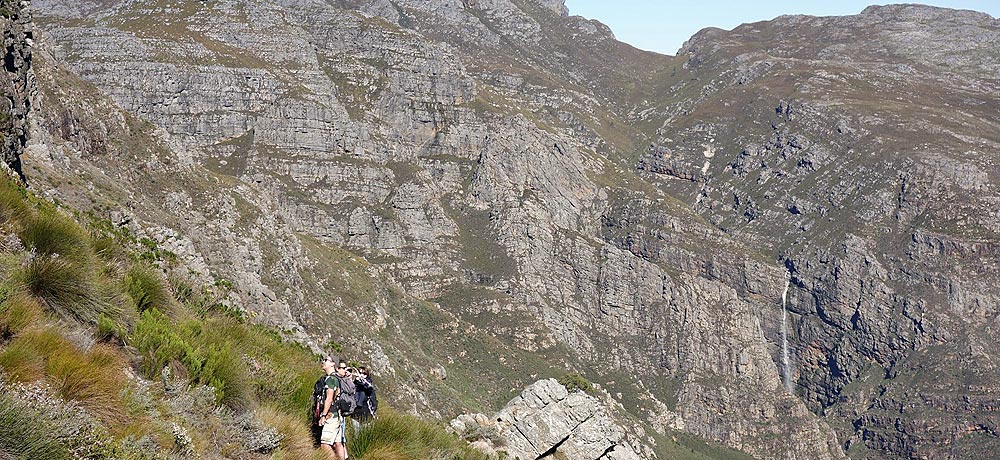
1: Tsitsikamma National Park: The place of much water
This place is a real gem. The Tsitsikamma National Park lies along the famous Garden Route on the beautiful southern coast of South Africa. The park is known for its dramatic coastline, indigenous forests and the Otter Trail. Tsitsikamma, which means “place of much water” in Khoisan, includes 80 km of rocky coastline with spectacular sea and landscapes. Further, the national park comprises a remote mountainous area and a high forest. You find fynbos and a wide variety of beautiful flowers here.
The park was the first Marine National Park in South Africa. Until this day, it is one of the largest Marine Protected Areas in the world, making it a “laboratory” for research on endangered species. You can see dolphins play and surf in the Indian Ocean here. The southern right whale visits this area and comes inshore to breed.
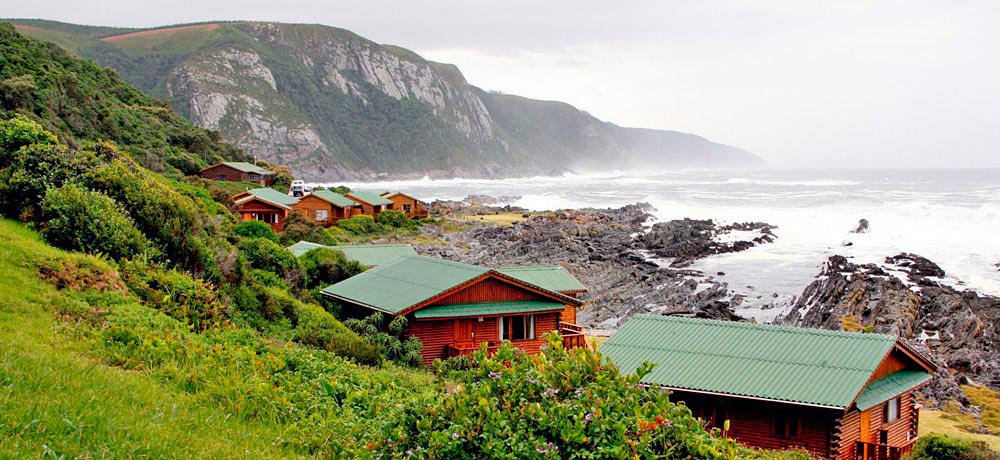
If you are looking for an adventure in the wild, Tsitsikamma is where to go: Choose from one of the numerous hiking trails or watersport activities such as snorkelling, diving, kayaking, or tubing. The famous 5-day Otter Trail starts at Storms River Mouth and leads you on a beautiful journey along the coastline. It’s very popular and permits are limited so make sure you book well in advance. You will hike through coastal forests and pass by rivers, streams, and tidal pools. If you don’t want to commit to a 5-day hike, however, there are several shorter trails in the area. Finally, if you are up for a thrill, why not do the bungee jump from the Bloukrans Bridge nearby?
Where to stay: When you stay at the Storms River Mouth rest camp, make sure to book one of the chalets directly at the beach! Enjoy a braai on your little veranda, nestled between the sea and the forest.
2: Blyde River Canyon & Panorama Route: A stunning drive
Centred around the Blyde River Canyon, the Panorama Route in the Mpumalanga highlands is one of the world’s most beautiful drives. This area is spoilt with one of the largest stretches of forest in South Africa, impressive waterfalls, and lush mountains. The scenic route is also close to the world-renowned Kruger National Park.
The heart of the Panorama Route, the Blyde River Canyon, is one of the largest canyons in the world. From the viewpoint at the Three Rondavels, you have a spectacular view of the expansive canyon. The Three Rondavels got their name from the traditional African huts they resemble. The three massive rock edifices are formed by the slow erosion of the underlying soft stone. Enjoy the breath-taking panorama of the beautiful landscape at sunrise when no one else is around.

Another fun thing to do when in the area is the Graskop Gorge Lift. This viewing lift will take you down 50 metres into the gorge. Down in the indigenous forest, you can wander on walkways and over suspension bridges.
If you need help planning the best route, why not have a look at our South Africa Highlights Self-Drive Tour? This tour includes the panorama route, Kruger National Park, and many more highlights in South Africa. And the best thing is, you get insider advice from experts and don’t have to worry about booking accommodation!
Where to stay: The Hamilton Parks Country Lodge offers comfortable and affordable accommodation in the Lowveld. Previously a dairy and banana farm, you find an abundance of wildlife on the massive land. This accommodation is also part of our South Africa Highlights Self-Drive Tour.
3: Cape Winelands: Stellenbosch has more to offer than just wine
About 40km east of Cape Town nestled in the Cape Fold Mountains lies a series of valleys, also known as the Cape Winelands. A magical place on your list of where to go in South Africa. Not only serve the mountains as a dramatic backdrop, but they also provide unique soil conditions that create great conditions for making wine. Additionally, the inland vineyards benefit from a Mediterranean climate. The Cape Winelands are the largest winemaking region in South Africa, grape cultivation here dates back to the 1600s.
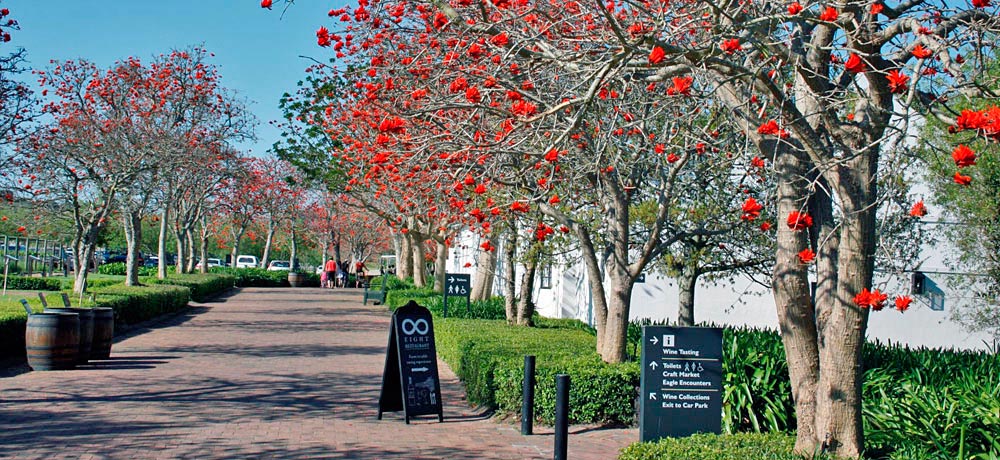
The town of Stellenbosch is famous as “capital” of the Winelands and is known around the world for the quality of its wines. This bustling town is situated in the picturesque setting of the Jonkershoek River Valley, surrounded by the Stellenbosch Mountains. It is the second-oldest European settlement in the province after Cape Town.
Every year from December until January, the popular Spier wine farm in Stellenbosch hosts the “Spier Light Art”. The event is freely accessible to the public. Each night, visitors can experience light and sound artworks throughout the farm.
But you don’t have to be a wine lover to enjoy your trip to “Stellies”: Just outside of Stellenbosch lies the Jonkershoek Nature Reserve, which is home to the monumental Jonkershoek Mountains. Here, nature lovers can explore the waterfalls in the area on one of the various hiking trails.
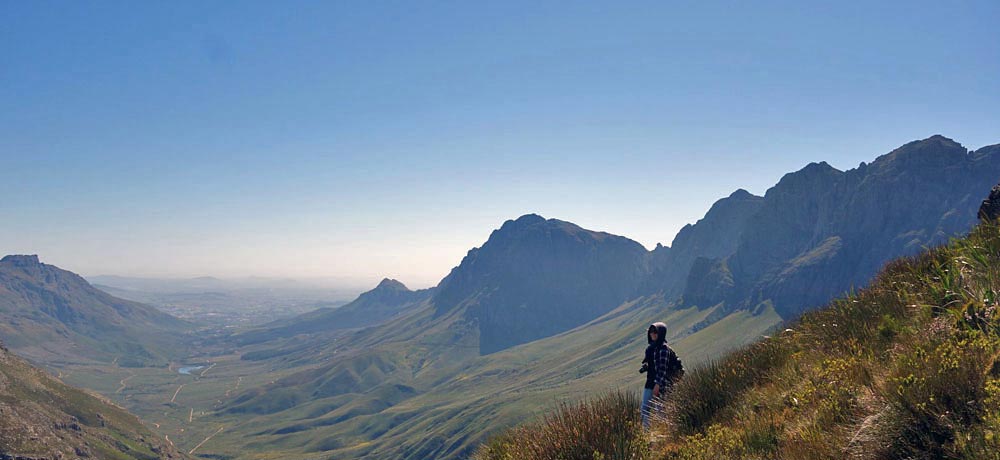
Where to do a wine tasting: A real hidden gem is the Hidden Peak Wine Estate, that is located at the slopes of the Helderberg Mountain near Stellenbosch. The wines here are excellent, and the view over the “hidden valley” incredibly beautiful.
4: Addo Elephant National Park: Elephants, elephants, and – elephants!
The Addo Elephant Park was established in 1931 when there were only 11 elephants left in the area. Today, you find over 600 elephants in the Addo Elephant National Park. Besides the large herds of elephants, the park is home to four other members of the Big Five: rhino, lion, leopard, and buffalo. In fact, Addo National Park gives shelter to the “Big Seven”, which includes the great white shark and the southern right whale. You will possibly also see many of the more than 400 Cape buffaloes and various antelope species that roam South Africa’s third-biggest national park. Lions and spotted hyenas are often seen in the early morning or from evening to night-time.
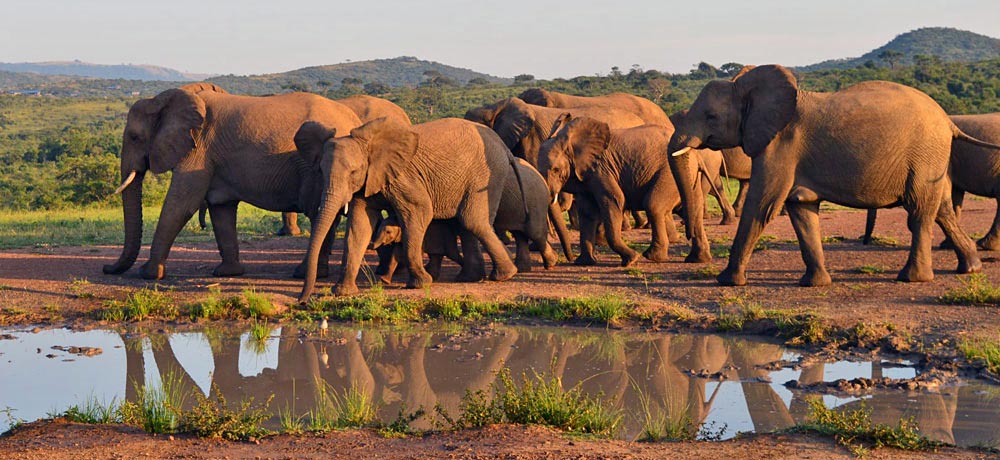
When deciding where to go in South Africa, consider that a visit at Addo Elephant Park is easily combined with your trip along the Garden Route. While maybe not as well-known as the famous Kruger National Park, Addo is the perfect park for wildlife viewing when you don’t want to drive too far to see game. Addo Elephant National Park is not only a must for close-up encounters with elephants: Not as crowded as the Kruger Park, it can often take as long as an hour before you see another car on the road. And chances are, that when you spotted an animal, there won’t be other cars blocking your sight. Further, the park has about 120 kilometres of road, the self-drive section is actually doable in a day. But don’t worry, the vast and varied landscape of Addo National Park is nothing close to small.
Why we love it: On a hot day, just wait at one of the waterholes for elephants to stop by to refresh themselves.
5: Where to go in South Africa? Cape Town: The allrounder
When you ask anyone where to go in South Africa, most likely, they will tell you that you have to visit Cape Town. Cape Town is the second most populated city in South Africa after Johannesburg. It is also the legislative capital of South Africa, and the South African Parliament sits here. Besides that, it is a breath-takingly beautiful city, squished between mountains and the sea, with an abundance of things to do and explore.
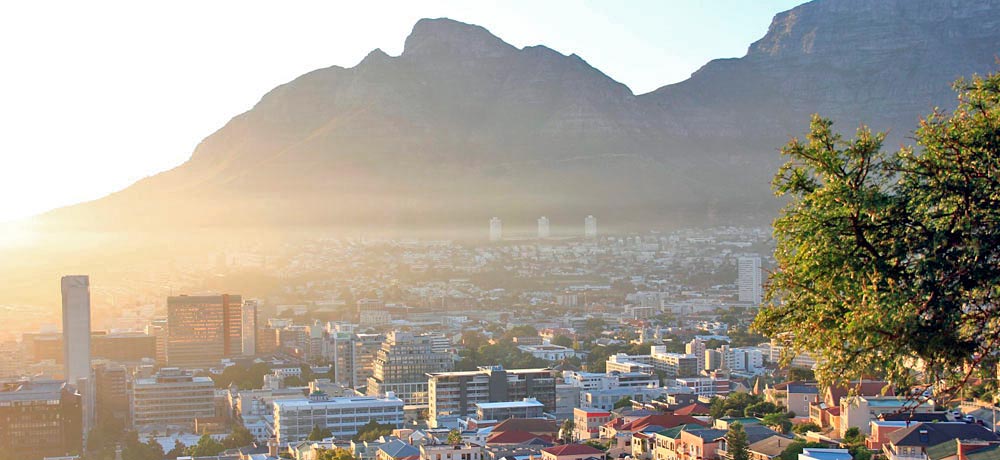
Cape Town’s wealth of different cultures and cuisines, its historical complexity and intense natural beauty attract many visitors all year round. You will find that it is a very laid-back city, hence the loving nickname “slaapstad”, which loosely stands for “Sleepy Town”. When in the Mother City, take a drive out to Chapman’s Peak Drive, or do the short hike up Lion’s Head at sunset for beautiful views over the whole city. Additionally, make sure to visit the Zeitz MOCAA, the largest museum of contemporary African art in the world.
Moreover, there is plenty of opportunity here to engage with the remnants of Apartheid: There are many ambitious projects worth visiting in the townships on Cape Town’s outskirts. One of the highlights is the culture and art centre “Guga Sthebe” in Langa, Cape Town’s oldest township. Have a look at their event programme, they often host performances or concerts. On a normal day, you can visit their crafter studios where you can buy locally sewn products, pottery, beading or mosaic works.
Insider Tipp: The beautiful botanical garden Kirstenbosch offers free guided walking tours. This is the perfect opportunity to brush up your knowledge about the local flora and fauna!
6: Watch whales in Hermanus and meet penguins in Betty’s Bay
Hermanus is a small and cosy coastal town about a 1.5 hours’ drive from Cape Town. The town lies on South Africa’s south coast and is famous for whale watching: From June to December, the Walker Bay in Hermanus attracts a large number of southern right whales. Whale watching is so popular here that Hermanus even hosts a whale festival in September. The festival offers educational talks, film screenings, beach clean-ups, street parades, and plenty of good food. The town also has its own Whale Crier, who blows their kelp horn every time a whale is spotted. Hermanus is a beautiful little holiday town, perfect for a day trip from Cape Town when you want to get some down-time outside of the city.
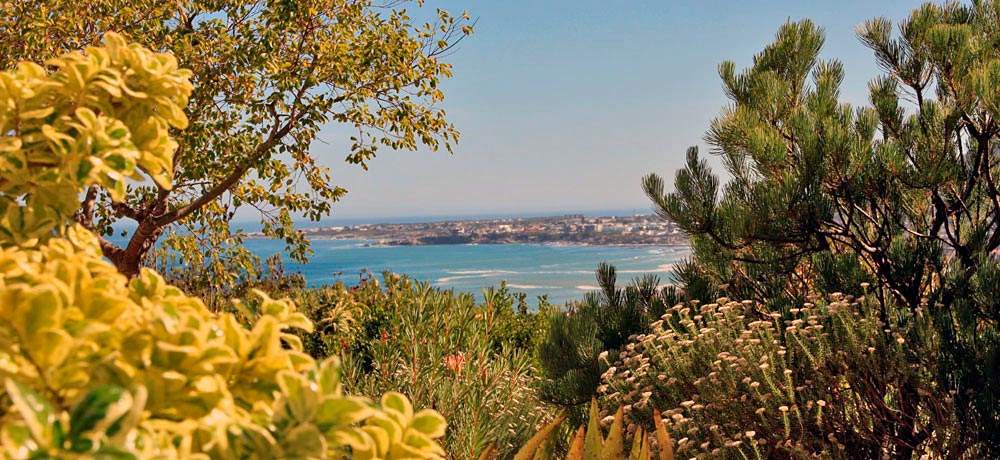
When visiting Hermanus, you should make time to enjoy the long, white beaches here. If you feel like a picturesque stroll by the beach, we know where to go: Take a walk along the “Cliff Path” that leads you alongside the sea and rocky cliffs for more than 10km. However, you do not have to walk the whole path. Delight in the public art at Gearing’s Point and learn something new with the biodiversity info boards along the way.
In case you miss out on the whale festival, you can still learn more about whales in the Whale House Museum in the nearby town of Betty’s Bay. The museum has a full-size southern right whale skeleton on display. Furthermore, Betty’s Bay hosts a colony of African penguins at Stony Point. It is quieter here. You find less tourist crowds but more penguins here than in Simon’s Town. These mainland penguin colonies, of which you find four in total in South Africa, are making an important contribution to preserving these unique seabirds. The best time to see the seabirds waddling on the beach is in the late afternoon, when the penguins return from fishing.
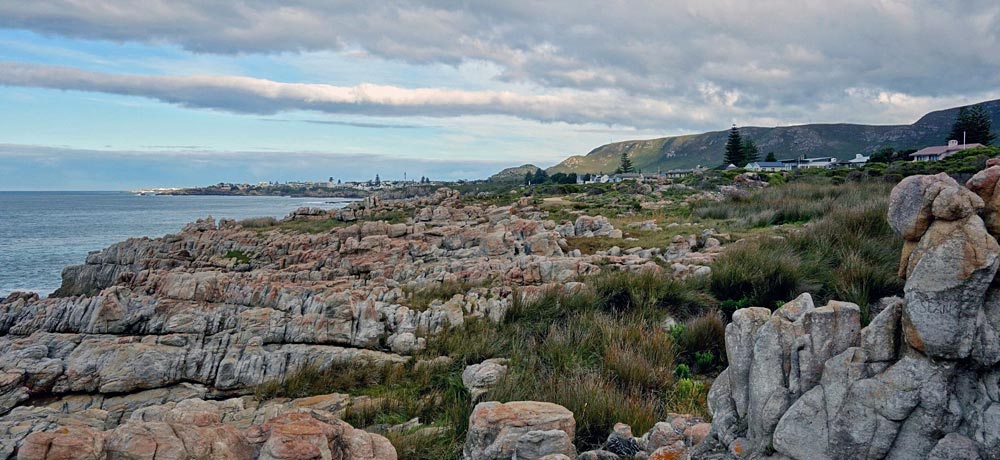
Did you know: The southern right whale was given its name when whale hunting was still allowed. Their sturdy shape and tendency to float when dead made them the “right” whales to hunt.
7: Hluhluwe-iMfolozi National Park and the conservation of the white rhino
The Hluhluwe-iMfolozi National Park lies in KwaZulu-Natal, north of Durban. It is one of the oldest game reserves in Africa and offers excellent opportunities to spot the rhino and other members of the “Big Five”. The beautiful park is particularly known for its efforts to conserve the white rhino. Moreover, you find Africa wild dogs, cheetahs, giraffes and nyalas here. The best time to see mammals is from May to September.
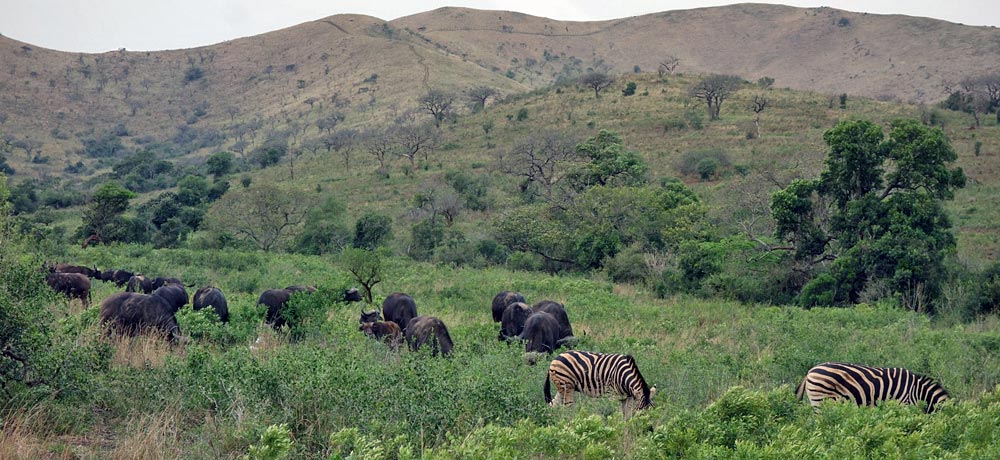
While you have probably heard about the nearby Kruger Park, Hluhluwe-iMfolozi is where to go in South Africa when you want to learn more about the white rhino, that was brought back from the brink of extinction. By visiting the park, you also support the conservation of these fascinating animals. But don’t get disappointed when trying to spot a white rhino: There is actually no colour difference between the black and white rhino species. The white rhino gets its name from the Afrikaans word “weit”, which translates to wide and refers to the animal’s wide mouth. White rhinos have complex social structures and are generally less shy than the black rhino. They are also larger than black rhinos. Further, they prefer open grass plains, which makes them easier to spot on safari.
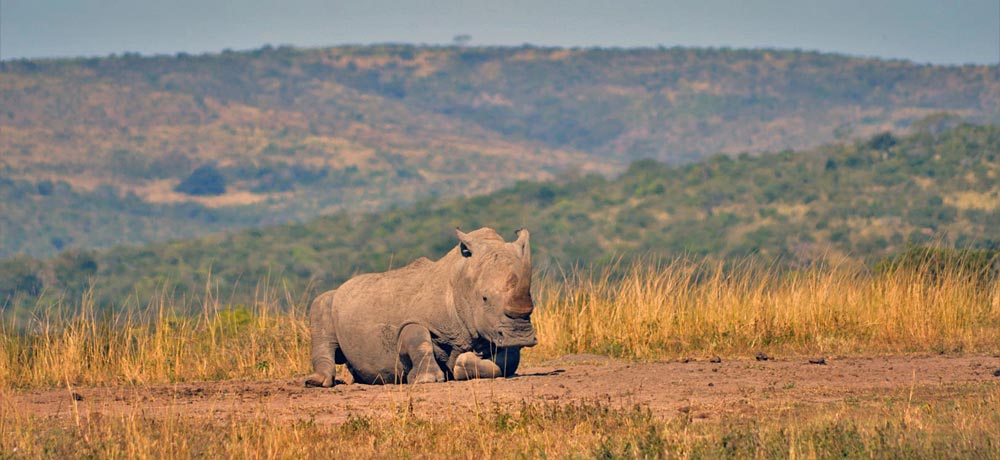
There are two genetically different subspecies, the northern and the southern white rhino. As of March 2018, there are only two northern white rhinos left, and both are female. They live in the Ol Pejeta Conservancy in Kenya and are protected by 24hr armed security.
If you are interested in learning more, we advise you to go on a guided game drive, or even a guided tour. We believe, a safari is only as good as the guide who accompanies you. Their eyes will spot animals that you might have never seen, they know the best spots and can give you all the background information. At South Africa-Experience, our guides are our pride. On our Jewels of the North and East Tour, you and your guide will also visit the Hluhluwe-iMfolozi Park.
Did you know: You can join the park’s WhatsApp group where travellers post their recent sightings. However, you are not allowed to report sightings of rhinos in order to protect them from poachers.
By reading this blog, you are one step closer in making an educated decision about where to go in South Africa. If you have any questions or would like to book a tour in South Africa, get in touch with us. Our team is happy to help!










